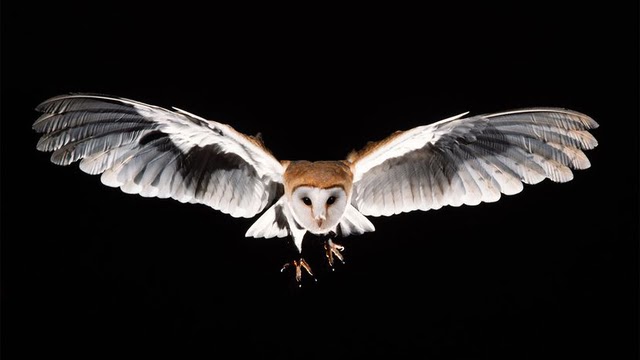Quck answer
Owls are able to fly silently due to a unique combination of specialized feathers, soft surfaces on their wings, and the ability to adjust their flight to minimize noise. Their wings are covered in velvety feathers that absorb sound and their primary feathers have comb-like serrations that break up airflow and reduce turbulence. Additionally, the edges of their wings are fringed with soft, downy feathers that further muffle sound. Finally, owls are able to adjust their flight path and speed to avoid disturbing air currents, making their flight virtually silent.
Wild Animals

Owls have always been a mysterious and intriguing creature, often associated with both death and wisdom. Their silent flight has captivated humans throughout history, from ancient Greek mythology to modern pop culture. Many myths have developed to explain their ability to fly without making any noise. The ancient Greeks believed that the goddess Athena, associated with wisdom, favored the owl and offered it special protection. The owl was also thought to predict victory in battle. In Hindu culture, the owl is a symbol of luck and prosperity, while Native American tribes view it as a protector of warriors.
But what’s the science behind the owl’s silent flight? Owls have a unique wing structure and feathers that allow them to fly almost silently. Their feathers have a special fringe that reduces noise by breaking up the air as it flows over the wings. This, combined with a flexible and asymmetrical wing shape, allows owls to fly without creating the turbulence that causes noise. The owl’s large wings also allow them to fly slowly and maneuver in the air with incredible precision.
Owls are truly fascinating animals with incredible physical abilities. Their silent flight is just one example of how they have adapted to their environment and evolved over time. So next time you see an owl flying overhead, remember the science behind their silent wings.
FAQ
1. What makes owls’ flight silent?
Owls have special adaptations that allow them to fly silently through the air. One of the most important adaptations is their feathers. The edges of their primary feathers are fringed, which helps to break up and absorb sound waves.
2. Can all owl species fly silently?
Most owl species have the ability to fly silently, but some are better at it than others. For example, the barn owl is known for its exceptionally silent flight.
3. How do owls’ wings help them fly silently?
Owls have large wings relative to their body size, which helps to reduce the amount of sound they produce while flying. They also have a special structure in their wings that allows them to adjust the shape of their feathers to control the amount of noise they make.
4. Are there any other ways that owls reduce sound while flying?
Yes, in addition to their fringed feathers and large wings, owls also have specially shaped bodies that help to reduce noise. Their bodies are streamlined and their legs are covered in soft feathers that muffle any sounds they might make while moving.
5. How do scientists study owl flight noise?
Scientists use a variety of methods to study owl flight noise. One common method is to use microphones to record the sounds of flying owls. They can then analyze these recordings to better understand how owls fly silently.
6. Can other birds fly silently?
While owls are known for their silent flight, other bird species also have adaptations that allow them to reduce noise while flying. For example, some species of pigeons have fringed feathers that help to break up sound waves.
7. Why do owls need to fly silently?
Owls hunt at night and rely on their ability to fly silently to sneak up on prey without being detected. Their silent flight also helps to keep them hidden from potential predators.
8. How fast can owls fly?
The speed at which owls can fly varies depending on the species. Some species, like the snowy owl, can fly up to 60 miles per hour. Other species, like the barn owl, are slower and fly at speeds of around 20 miles per hour.
9. How far can owls fly?
The distance that owls can fly also varies by species. Some species, like the snowy owl, undertake long migrations of thousands of miles. Other species, like the barn owl, have smaller home ranges and may only fly a few miles in a night.
10. How do owls navigate while flying at night?
Owls have excellent night vision that allows them to navigate while flying in low light conditions. They also rely on their hearing to locate prey and avoid obstacles while flying.
11. How do owls hunt while flying?
Owls use their sharp talons to grab prey while flying. They can also use their beaks to bite and kill prey in mid-air. Their silent flight allows them to get close to prey without being detected, giving them a better chance of making a successful catch.
12. Are there any threats to owl populations?
Yes, owl populations are threatened by habitat loss, climate change, and other human activities like hunting and pesticide use. Conservation efforts are underway to help protect owl populations and their habitats.





Leave a Reply